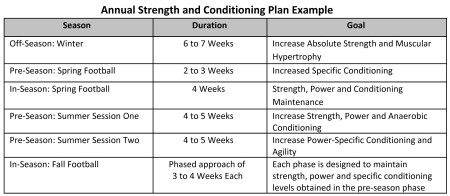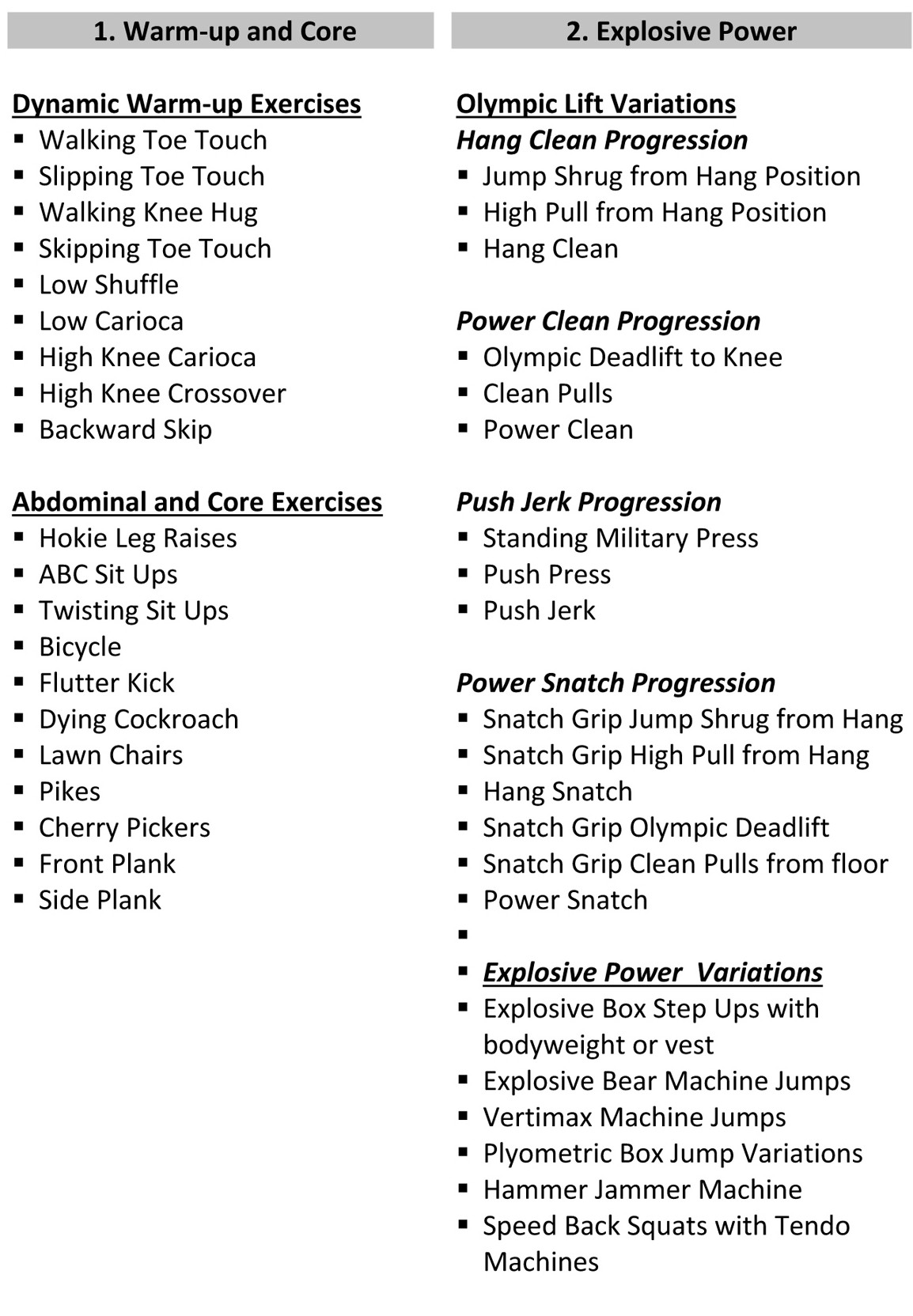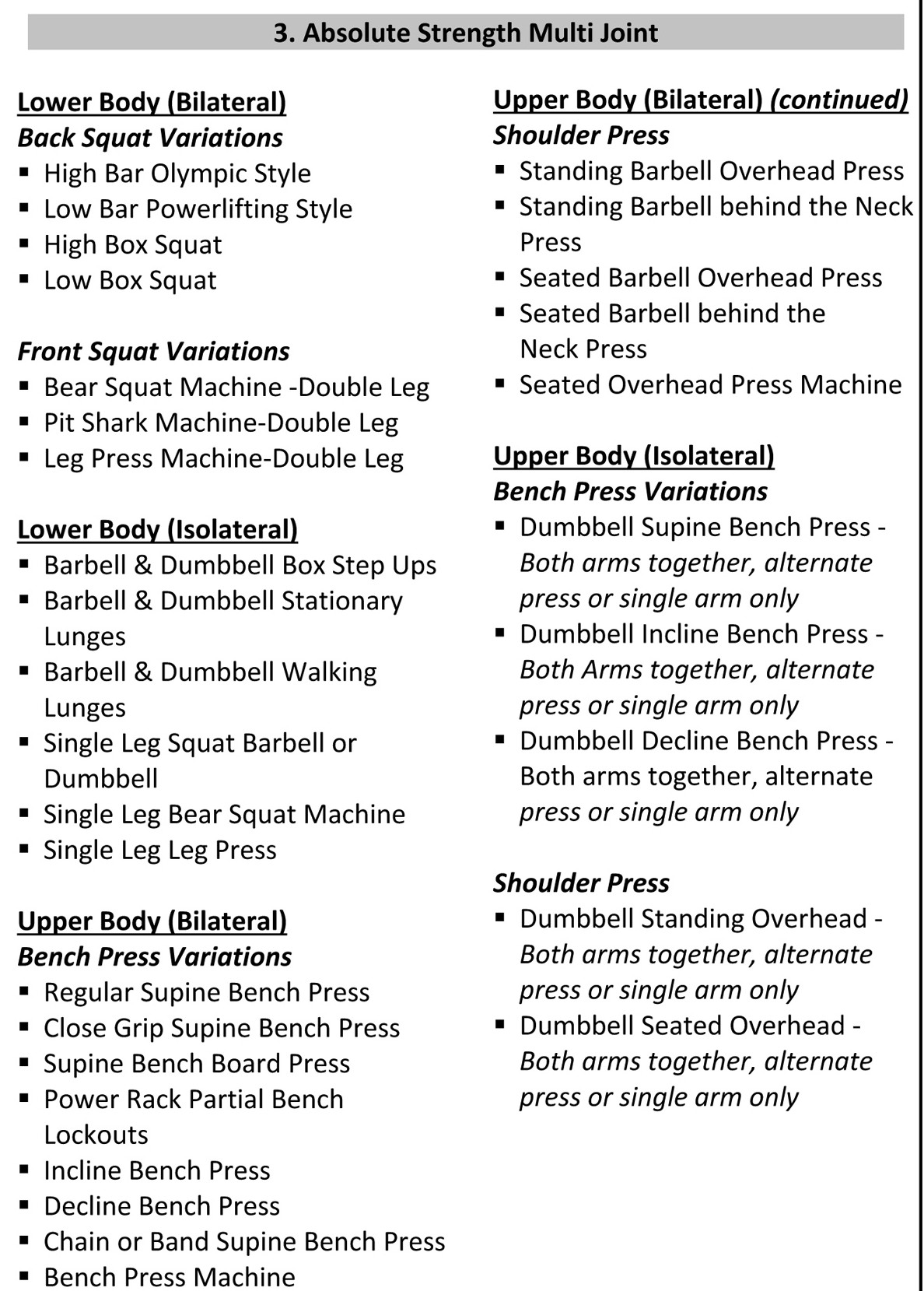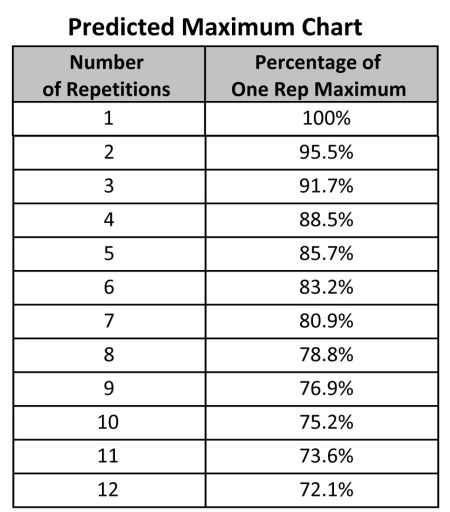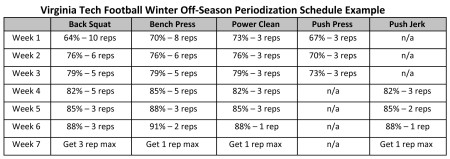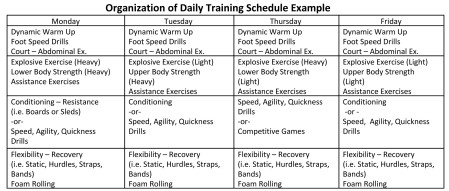Article CategoriesAFM Magazine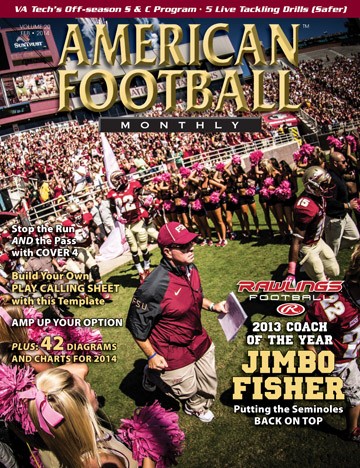
|
Strength Report: Writing the Winter Off-Season Strength and Conditioning Program, Part Iby: Mike GentryAssociate Athletic Director for Athletic Performance, Virginia Tech University © More from this issue I enjoy my profession of strength and conditioning coaching because it allows me the opportunity to choose and to create the tools that can then be used by our athletes to improve their athletic performance. After 30 years of writing strength and conditioning programs at the Division I level, my approach has evolved into a systematic methodology of program design that fits my overall strength and conditioning training philosophy. I believe in a phased periodization approach to physical training as developed originally by Eastern European and Soviet Union scientists and coaches and introduced here to American coaches by researchers such as Mike Stone, Bill Kraemer and Vladimir Zatsiorsky. The training model should provide a roadmap that allows the athlete to progress from point A to point B. The use of periodization principles will help a coach to determine appropriate volume, intensity and frequency of training. When training football players, the use of multi-joint, ground based movements should be the core or focus of their resistance training. Exercises such as Olympic lifting variations, squatting variations, and pressing variations offer more opportunities for sport specific movements and also increase overall coordination and balance. The exercise instruction should be progressive in nature, from simple to complex. As an example, the hang clean is taught from a hang position jump shrug first, followed by a hang position high pull, progressing to a hang clean. The one element of athleticism that affects other parameters of athleticism the most is strength. This is particularly true for younger and untrained athletes. There is a high correlation between an athleteís relative strength and short sprint speed. The development of absolute strength is essential and should be emphasized during the winter off-season phase of football training. When training explosive power athletes, itís my belief that some of their training should be done with velocity. This application of force can be trained with the use of Olympic lifting variations, plyometric exercises and other exercise modalities. We typically program at least one explosive, high velocity exercise each training session. Bar speed is of paramount importance when using the Olympic lifts for the development of explosive power. When programming clean, snatch and jerk variations, we use fewer reps per set, performed at lower intensities. This allows greater bar speed and more transferable results. In general, it is better to slightly undertrain a football player in the weight room than to overtrain him. My goal is for our players to achieve every programmed rep of our foundational core exercises, not easily but successfully. Our philosophy includes changing most assistance exercises every two to three weeks during both the off-season and in-season. There should be frequent use of different variations of pulls, the squat and presses particularly during in-season training. Using a variety of the fundamental core exercises and consistently changing your assistance exercises is vitally important for avoiding accommodation, boredom and overuse injuries. Your training philosophy should be based on your investigation of the science of training through formal and informal education. This includes talking with and reading the ideas of strength and conditioning professionals, as well as your personal experiences of what has worked and not worked well in your past experience training players. Before I start to develop the off-season program or winter program for football I develop a loosely structured annual plan. In general, the plan should include the physical goals that are most important during each phase of training. Each of these phases will have different training priorities based on their proximity to the competitive season. While concurrent training goals are necessary, prioritization of training goals must be honored. (See Chart 1)
Prior to writing your program, it is helpful to develop menus of training exercises and drills organized in related categories. This list should be updated each year. These exercise menus allow you to keep variety in your program. The exercises must be appropriate and practical. (See Chart 2)
Step 4: Use the Predicted Maximum Chart to Program Core Lifts Use of the Predicted Maximum Chart will allow you to properly program your athletesí core lifts throughout the cycle. This knowledge will allow you to systematically move the athletes toward appropriate near max per repetitions (training peaks) as they progress through the training cycle. As an example: 75% for 10 reps, 85% for 5 reps, 92% for 3 reps. You should gradually move the athletes toward a theoretical max per repetitions as they progresse through the cycle. (See Chart 3)
Step 5: Write Your Periodization Schedule After choosing your primary or core lifts, write your periodization schedule for the training cycle. The schedule provides the target intensity for the last set of preselected core exercises through each week of the cycle. These intensities are selected based on the goal of the program, the athleteís general profile and length of the cycle. (See Chart 4)
The next step in the writing process is to determine your weekly training frequency (as an example, three or four days of resistance training per week.) I believe a variety of training frequencies can be effective. Iíve chosen the four-day-per-week model for our winter Off-Season approach. Remember, at this time of the year, our most important adaptation is to become stronger and gain muscle. This chart represents the framework I used to develop this particular off-season program. I recommend developing your weekly and daily training programs with support from your periodization schedule, predicted max chart and exercise menus. (See Chart 5)
I encourage you to include some form of testing and evaluation in your program. Testing allows you to evaluate your athletesí progress and your programís effectiveness. When structured and administered correctly, this testing phase will provide motivation to the athlete and reinforce correct exercise technique. Be sure that your testing protocol measures your training objectives. Winter Off Season SAQ Schedule PDF Winter Off Season Strength - Power PDF |
|
| HOME |
MAGAZINE |
SUBSCRIBE | ONLINE COLUMNISTS | COACHING VIDEOS |
Copyright 2025, AmericanFootballMonthly.com
All Rights Reserved


